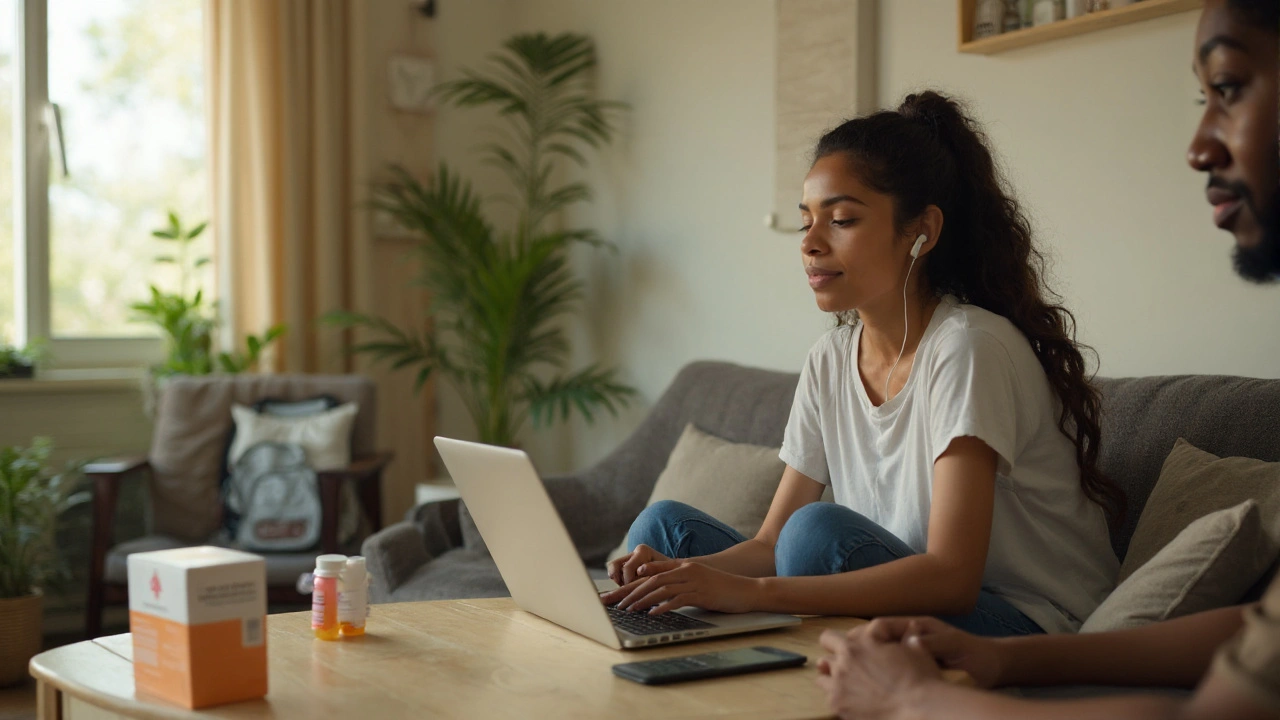Remote Monitoring for OUD: What It Is and Why It Matters
If you or a loved one is dealing with opioid use disorder (OUD), staying connected to care can feel like a hurdle. Remote monitoring removes that barrier by letting doctors check in from anywhere, using phones, apps, or wearables. You get real‑time data on cravings, medication adherence, and mood without driving to the clinic every week.
How Remote Monitoring Works
The core of remote monitoring is simple: a device or app records information and sends it securely to your treatment team. Most programs use one of three methods:
- Video visits: A short video call replaces the in‑person check‑up.
- Digital questionnaires: You answer daily or weekly questions about pain, cravings, and side effects on your phone.
- Wearable sensors: A wristband tracks heart rate and sleep patterns that can signal relapse risk.
The data goes into a dashboard that your clinician reviews. If something looks off – say, missed doses or spikes in anxiety – they can call you right away, adjust medication, or schedule an urgent visit.
Benefits You Can Feel Today
1. Faster help when you need it. Instead of waiting days for a lab result, your provider sees trends instantly and can intervene before a relapse grows worse.
2. Less travel stress. Rural patients or busy parents save hours by staying at home during check‑ins.
3. Better medication adherence. Reminders built into apps nudge you to take buprenorphine or methadone on schedule, which improves outcomes.
4. More honest reporting. Some people feel judged in a waiting room; an anonymous survey can be easier to fill out honestly.
5. Data‑driven treatment. Your doctor sees patterns over weeks, not just snapshots, so they can fine‑tune dosages or add counseling when needed.
All these perks add up to higher recovery rates and lower chances of overdose.
Getting Started with Remote Monitoring
First, talk to your prescriber. Ask if their clinic offers a telehealth platform that includes monitoring tools. If they do, you’ll likely need a smartphone or tablet, an internet connection, and possibly a cheap wearable – many programs ship one for free.
Next, set up the app following the step‑by‑step guide your provider sends. Most apps ask you to create a password, verify your email, and enable push notifications so you don’t miss reminders.
When you receive daily prompts, answer quickly and honestly. If you skip a question, the system usually flags it for follow‑up. Keep your device charged; low battery can break the data flow.
If you run into technical hiccups, most services have a help line. A quick call can solve connectivity issues without delaying care.
What to Watch Out For
Privacy matters. Choose platforms that use encrypted connections and comply with HIPAA. Read the privacy policy – it should explain who sees your data and how long it’s stored.
Avoid using public Wi‑Fi for video calls; a home network is safer. Also, remember that remote monitoring supplements, not replaces, in‑person care when you need physical exams or lab work.
Finally, stay realistic. Technology can’t read your mind. If you feel cravings surge, call your clinician even if the app doesn’t flag it yet.
Bottom Line
Remote monitoring turns OUD care into a daily partnership instead of occasional appointments. With simple tools, faster feedback, and less travel, many people stay on track longer. Talk to your treatment team today, set up the right app, and give yourself a smoother road to recovery.

- 11 Comments
What’s new in 2025: telehealth MOUD, long-acting meds, remote monitoring, naloxone OTC, and AI triage. Plain talk, real evidence, step-by-steps, risks, and what to do next.
